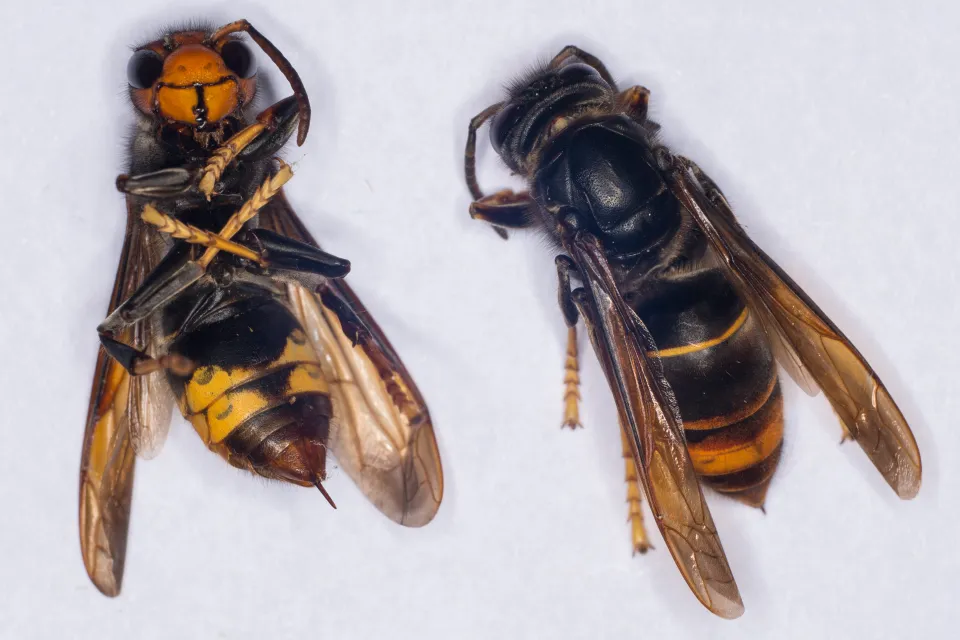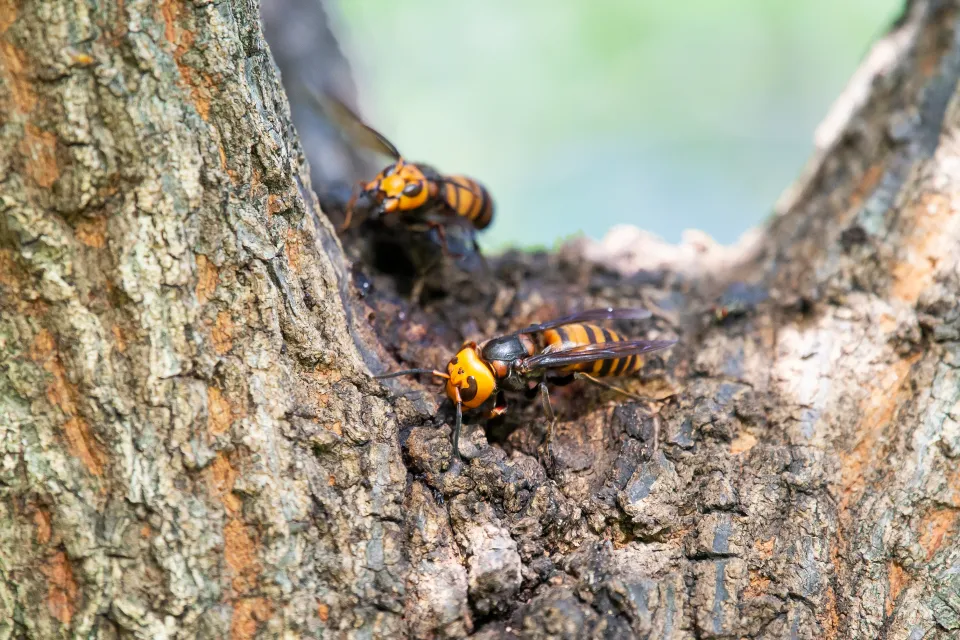BRITAIN might be a tiny island surrounded by ocean – but we’ve been invaded by some surprising creatures.
If you look hard enough, you’ll find stinging Asian hornets, squawking parakeets from India, and even scorpions. Yes, really.
Here are some of the more surprising invasive species that have made their way to our green and pleasant land.
Asian hornets
The Asian hornet has a few names, including the yellow-legged hornet and the Asian predatory wasp.
They’re indigenous to Southeast Asia, but they’re an invasive species in Europe – including the UK.
A queen measures about 1.2 inches long, while males come in at 0.94 inches.
Read more on UK surprises
There have been several sightings of the creature in the UK in recent years, and at least 10 nests have been destroyed.
They’re known for preying on honeybees and bumblebees, so it’s important to report them if you see them.
The Asian hornet isn’t aggressive, but it will defend its nest – and has a strong sting.
American bullfrogs
Americans know this critter as simply: bullfrog.
Most read in Science
But we’ve had to tack the “American” on because it has made its way to the UK.
It’s believed to have turned up around 1999, likely due to accidental escapes.
And it’s a problem because it spreads a pathogen to other amphibians called Batrachochytrium dendrobatidis.
Thankfully humans aren’t affected, but it’s seen as a threat to UK wildlife.
Yellow-tailed scorpions
Even lifelong Brits may be surprised to learn that our little island is home to scorpions.
Specifically the European yellow-tailed scorpion, which normally lives in southern Europe and northwest Africa.
But the species was accidentally introduced at the Sheerness Dockyard on Kent‘s Isle of Sheppey (as well as parts of east London).
It’s believed that the scorpions arrived in the 1800s on a shipment of masonry from Italy.
And there may be as many 10,000 to 15,000 of the critters here in Blighty.
It is venomous, but the sting is considered to be less painful than a bee.
Egyptian geese
When you imagine a goose, you probably think of a Canada goose (also an invader), or maybe a greylag.
But Britain is also home to a visitor from Africa: the Egyptian goose.
It turned up way back in the 17th century, introduced intentionally due to its striking looks. Fancy bird, that.
And now you’ll find it along the Thames (including Blackheath in London), as well as East Anglia.
They’re officially a non-native species, and are aggressive, known for killing waterbird chicks.
Parakeets
Another bird from far-flung lands has also sneaked into the UK: the rose-ringed parakeet.
It’s a bizarre sight given that they’re native to Africa and India.
But they’re commonly found across London and the Home Counties.
How they came to England is a mystery.
Some people think they escaped from a film set in the 1950s, or that they escaped from aviaries during the Great Storm of 1987 – or potentially even earlier.
Read More on The Sun
And there are now thousands of breeding pairs across the UK.
Whatever the cause, they’ve stirred up controversy due to their noise, and the fact that they compete with local birds (including dominating small bird feeders).

















